Have you just welcomed a fluffy chow chow puppy into your family? If so, then now is the perfect time to educate yourself on what’s ahead for your little one’s growth progression. Below, we discuss everything you need to know about the chow chow’s progression, including diet tips, month-to-month growth, and training tips!
Let’s dive in!
History Of The Chow Chow Breed
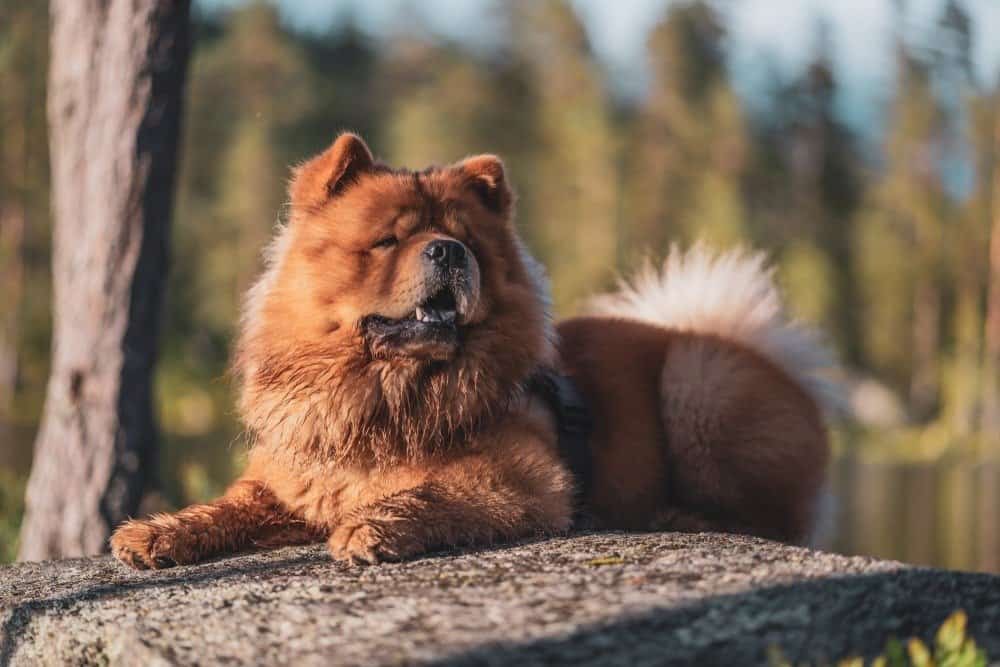
Dogs that resemble the
chow chow
have been found in paintings dating back to the Han Dynasty from 206 BD to 22 AD.
©Arne J. Enggrav/Shutterstock.com
The chow chow is one of the oldest dog breeds in the world. Dogs that closely resemble the chow chow have been found in paintings that were created during the ancient Han Dynasty, a period dating back to 206 BD. They are believed to have originated in China and Mongolia, and they eventually migrated throughout the region as their tribes did. The chow chow became an essential part of these tribes for their hunting abilities and their skill in guarding property.
The breed soon made its way to Britain and was sold by British merchants under the name ‘chow chow’. ‘Chow chow’ was a term used to describe various items, but the name stuck as the the pup was sold throughout the region. The chow chow soon became a regularly imported item and caught the eye of Queen Victoria, leading to the wide popularity and future recognition of the breed. The chow chow is now in the top 100 most popular dog breeds!
Chow Chow Growth & Weight Chart By Age
Let’s break down the average growth progression of the beloved chow chow!
| Age | Male Weight | Female Weight |
| Birth | 1 to 3 pounds | 1 to 2 pounds |
| 1 Month | 5 to 10 pounds | 4 to 8 pounds |
| 6 Weeks | 6 to 10 pounds | 4 to 9 pounds |
| 2 Months | 10 to 20 pounds | 10 to 16 pounds |
| 3 Months | 15 to 25 pounds | 15 to 23 pounds |
| 4 Months | 20 to 35 pounds | 20 to 32 pounds |
| 5 Months | 25 to 40 pounds | 25 to 36 pounds |
| 6 Months | 30 to 45 pounds | 30 to 42 pounds |
| 7 Months | 35 to 50 pounds | 35 to 46 pounds |
| 8 Months | 40 to 55 pounds | 40 to 52 pounds |
| 9 Months | 40 to 60 pounds | 40 to 55 pounds |
| 10 Months | 40 to 65 pounds | 40 to 58 pounds |
| 11 Months | 40 to 65 pounds | 40 to 58 pounds |
| 12 Months | 45 to 70 pounds | 40 to 60 pounds |
| 2 Years | 45 to 75 pounds | 40 to 65 pounds |
When Will My Chow Chow Stop Growing & How Big Will They Get?
The chow chow is considered a medium sized dog. They will reach adult height once they are 12 months old and their ultimate weight around 16 months. Most chows chows will reach 17 to 20 inches of height at the shoulder. On average, the chow chow will weigh anywhere from 40 to 70 pounds once they are fully grown. Your adult chow chow may continue to fill out a few centimeters around the chest and abdomen until they reach two years of age.
The most accurate estimation of your chow chow’s eventual size can be obtained by looking at their parents! Seeing your chow chow’s parents in person can offer you incredible insight to the growth that lies ahead.
When Should My Chow Chow Stop Eating Puppy Food?
Chow chow puppies require an energy dense food that helps them reach their growth goals! A balanced puppy diet will contain extra calories and fat that provide energy, increased calcium for bone growth, and even added vitamins for optimal brain development. For this reason, your growing chow chow will need to eat puppy food until they reach their mature adult size.
Dr. Amy Nicole Lewis, a veterinarian with Worldwide Veterinary Services told A-Z Animals that a puppy that does not eat a puppy-specific diet may struggle with developmental complications down the line. This can make then more prone to issues such as muscle and tendon injuries, arthritis, and hip dysplasia. Proper nutrition throughout puppyhood is especially crucial for medium to large size dogs.
We suggest feeding your chow chow puppy food until they are 12 months old, and then transitioning over to an adult kibble made for medium sized dogs over a two week period to prevent an upset stomach.
When Will My Chow Chow Start Losing Their Puppy Teeth?
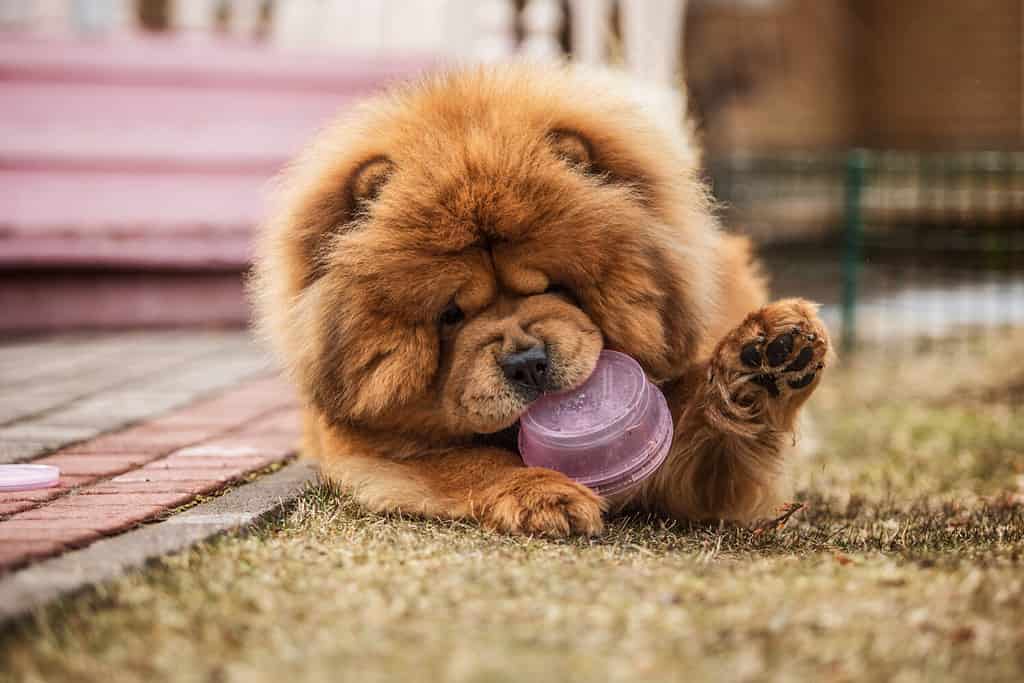
Your chow chow puppy will need plenty of appropriate chewing options throughout their teething process. Growing their adult teeth can lead to mouth discomfort and they will often seek out items to chew on for relief.
©dezy/Shutterstock.com
Is your chow chow puppy gnawing on your fingers and toes every chance they get? Well don’t worry, these sharp puppy teeth won’t stick around for long! Your chow chow puppy will have a full set of puppy teeth by the time they are six weeks old, but they should all fall out between ten to 12 weeks of age.
Your chow chow will begin to grow their adult teeth over the next three or four months until they reach 6 months of age. On average, most chow chows will have all their adult teeth once they are seven months old.
When Should I Start Training My Chow Chow?
We always suggest diving into your chow chow’s training program the moment they enter your home. The chow chow is known for being quite stubborn and independent, so this can increase the presence of undesirable behaviors if they are not properly trained or socialized. These pups can typically catch on to training concepts from eight weeks of age and on.
The chow chow is highly intelligent and trainable. However, their intelligence requires an engaging and consistent training program. The chow chow does best with a positive reinforcement style of obedience training. They do not respond well to negative or physical corrections.
Check out our tips on how to train your chow chow companion!
What Commands Should I Teach My Chow Chow First?
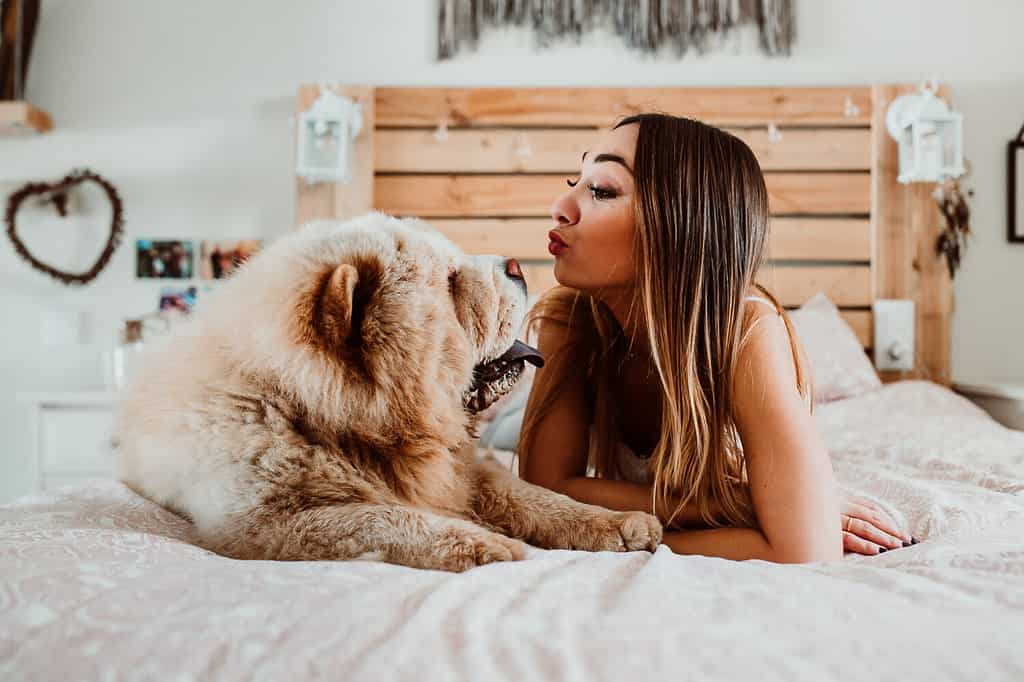
The chow chow can struggle with aggression towards unfamiliar dogs and humans if they are not well-socialized from puppyhood.
©Lucia Romero/Shutterstock.com
Once you are ready to dive into your chow chow’s obedience training program, you will need to know which commands you should first introduce. We suggest starting with the following cues and commands.
- Sit
- Stay
- Lay down
- Come
- Drop it
It’s important to also prioritize socialization in your chow chow’s training program. The chow chow can struggle with aggression towards unfamiliar dogs and humans if they are not well-socialized from puppyhood. We suggests introducing them to new people in and outside of your house, allowing them to interact with other healthy and vaccinated puppies, and introducing them to a variety of new sights and sounds when possible.
When Should My Chow Chow Be Housebroken?
Many puppy parents dread the potty training process for a variety of reasons. Luckily for all chow chow parents, the chow chow is known for being easily housetrained! As long as you implement a house-training process that is consistent and positive, most chow chows will be fully potty trained by the time they are five to six months old.
When Should My Chow Chow Be Spayed Or Neutered?

Chow chows require an engaging and positive training program due to their innate intelligence and stubbornness.
©iStock.com/Ivan Marjanovic
Chow chow owners will need to be aware of the best time to spay or neuter if there are no plans to breed them in the future. Spaying or neutering your chow chow companion can prevent reproductive infections and cancers, and it can even decrease their risk of aggression and roaming.
Most veterinarians recommend sterilizing your medium sized dog between the age of six months to 1.5 years of age. However, it’s always best to speak with your vet about what is best for your chow chow pup, as every dog is an individual with unique health needs.
Pictures Of Chow Chow Puppies
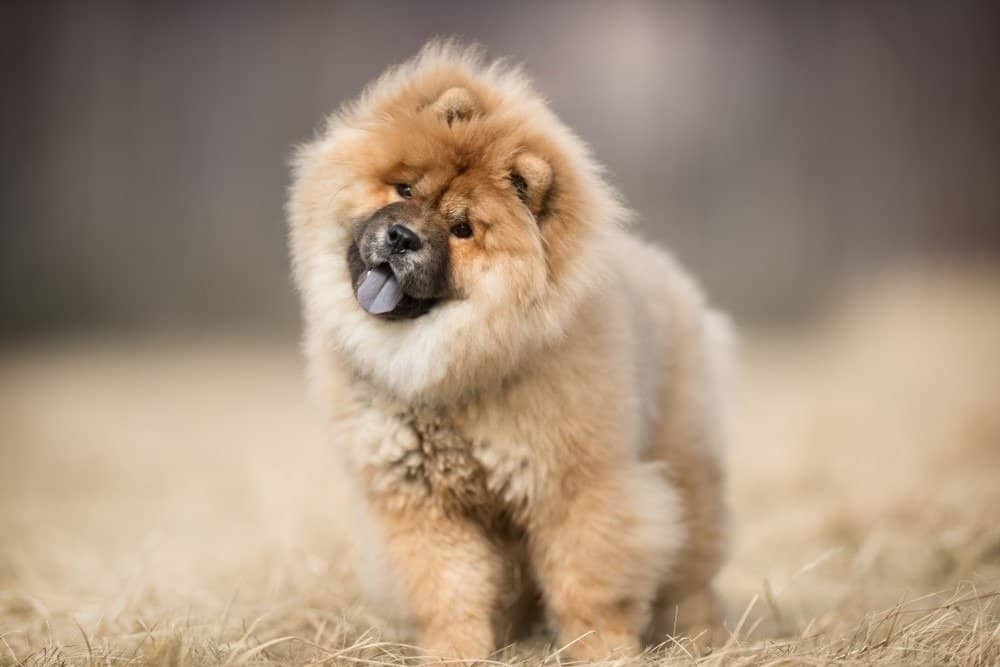
The chow chow will typically reach their mature adult size around 12 months of age.
©BIGANDT.COM/Shutterstock.com
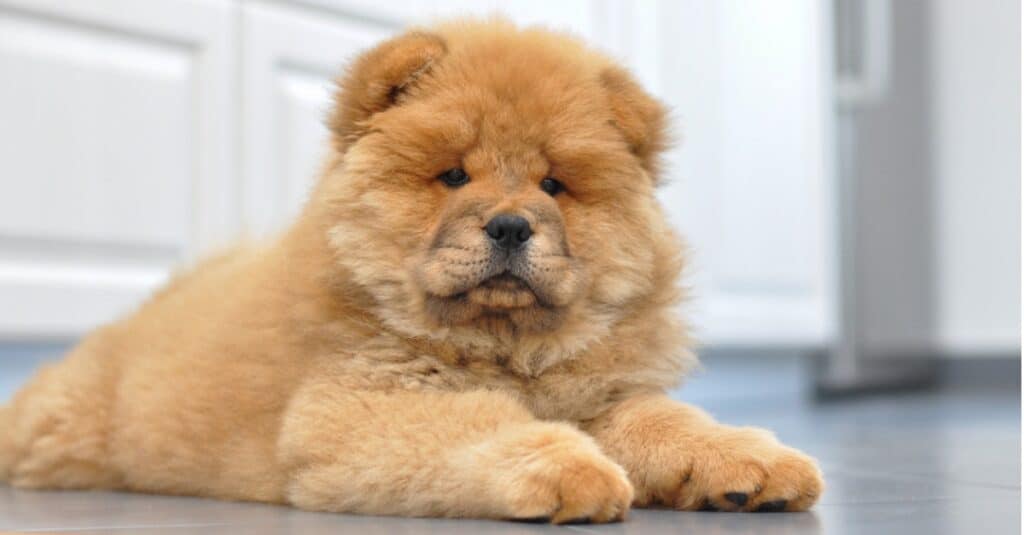
Chow chows are known for being affectionate family dogs!
©iStock.com/Ivan Marjanovic
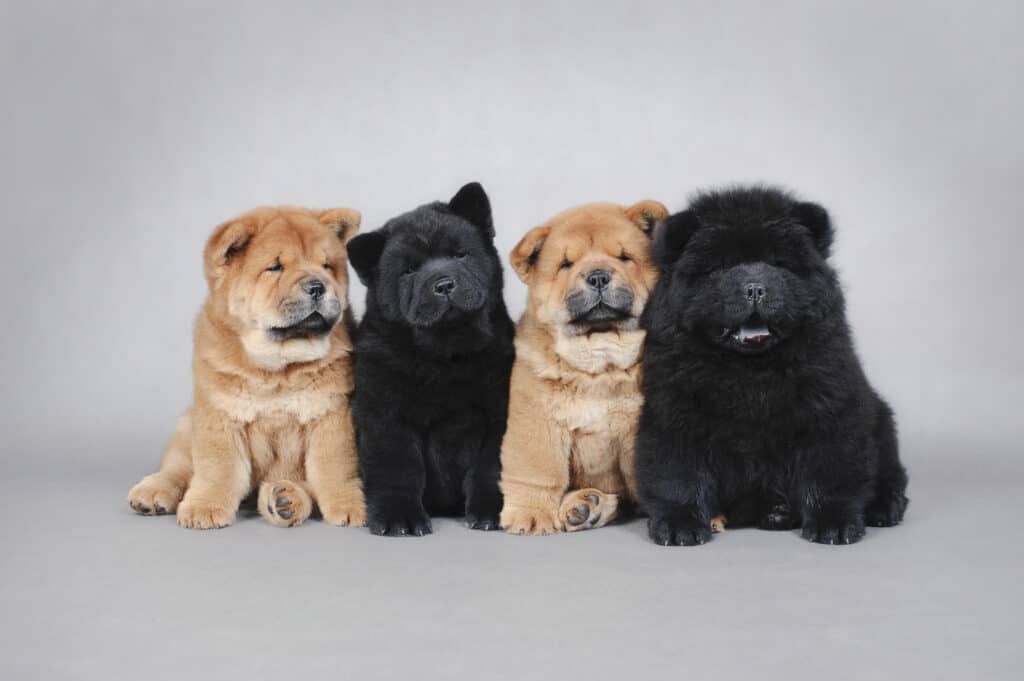
The chow chow puppy will start to lose their puppy teeth around 12 weeks of age.
©iStock.com/foto-front
Pictures Of Adult Chow Chows
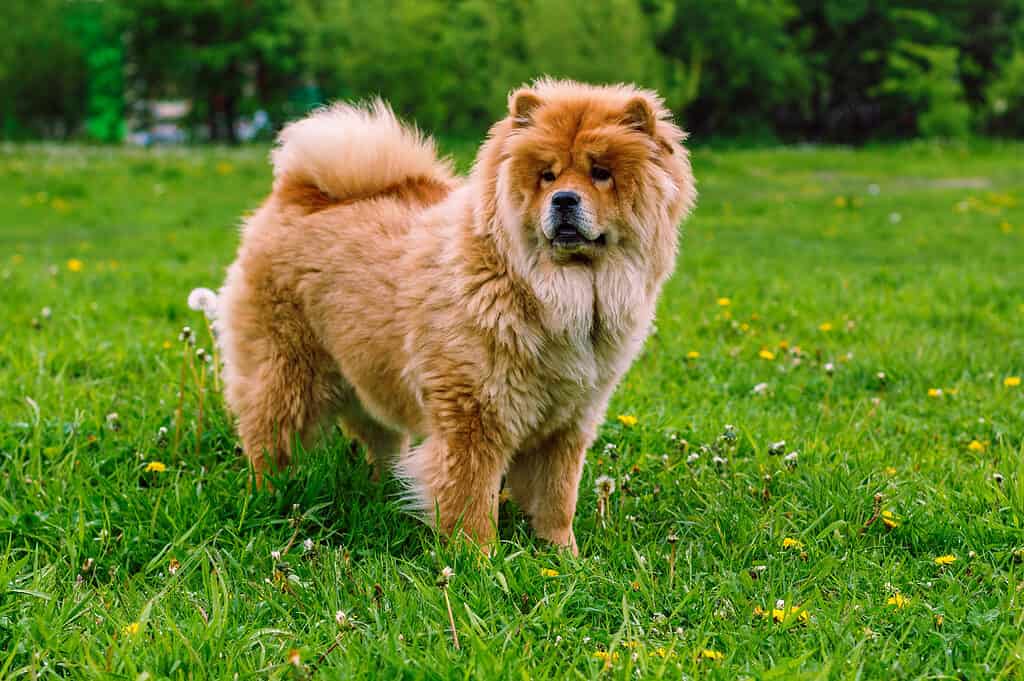
The chow chow needs to be socialized in puppyhood to prevent aggression and fear around unfamiliar people and dogs.
©Flower_Garden/Shutterstock.com
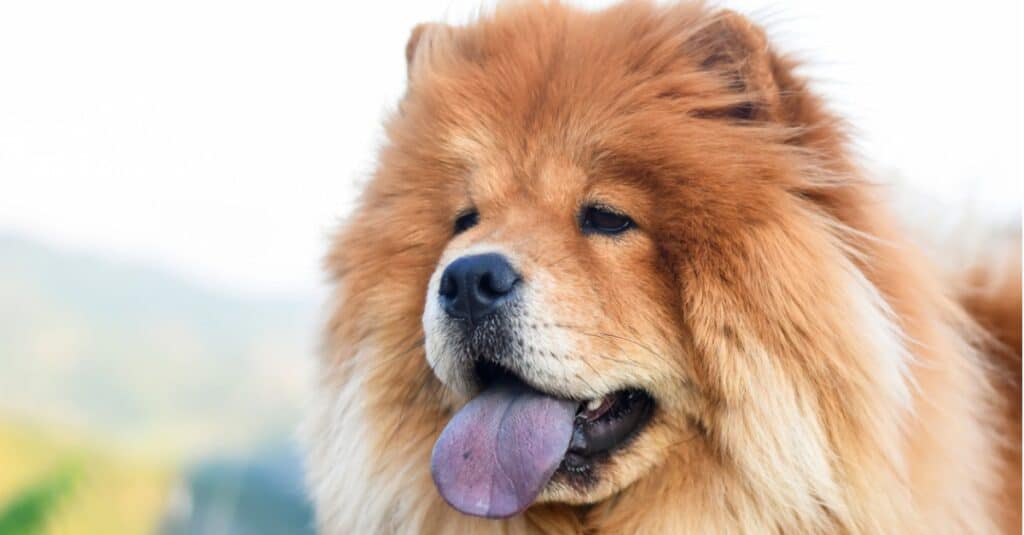
An intact chow chow has an increased risk of reproductive infections and cancers.
©iStock.com/Ivan Marjanovic
Are you ready to be a chow chow pet parent? Be sure to review the information above to gain all the insight needed to care for your growing chow chow!
The photo featured at the top of this post is © Flower_Garden/Shutterstock.com
Ready to discover the top 10 cutest dog breeds in the entire world?
How about the fastest dogs, the largest dogs and those that are -- quite frankly -- just the kindest dogs on the planet? Each day, AZ Animals sends out lists just like this to our thousands of email subscribers. And the best part? It's FREE. Join today by entering your email below.
Thank you for reading! Have some feedback for us? Contact the AZ Animals editorial team.







